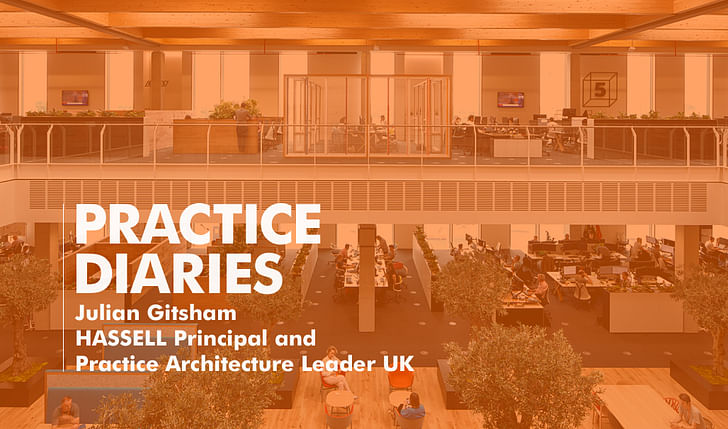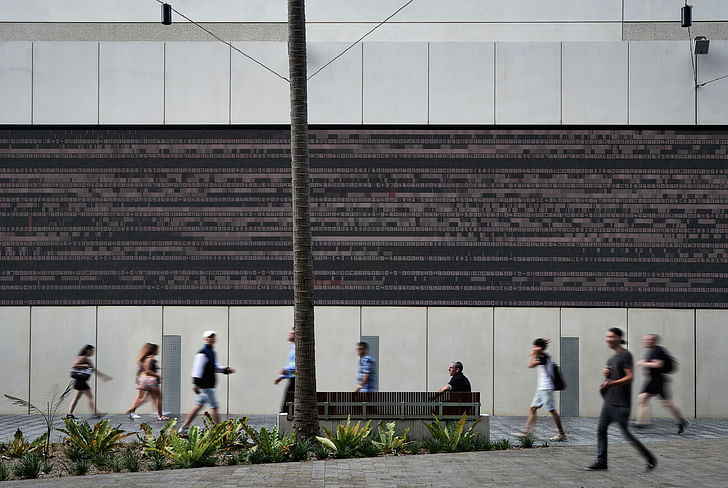

Look around. What is it that makes you most happy? Is it the mountain bike, or is it where that mountain bike takes you? Out amongst nature, wind in your face, exploring newfound tracks. Without this, the experience, it would simply just be a steel frame with wheels, sitting in a rack.
It’s the same with buildings or places. Without activation and life, they are just mere bricks and mortar or concrete structures, static in nature.
As architects and designers, we have to move away from building and creating ‘things’ and instead create places people love - experiences.
A report which looked at the impact of millennials on the economy revealed when it comes to money, experiences override things. In fact, more than 3 in 4 millennials said they’d choose to spend their hard earned cash on a desirable experience rather than a physical thing.*
And therein lies the challenge - and the opportunity for our profession.
Millennials (or Gen Y) make up an estimated 1.8 billion of the world’s population - with the UK home to around 16.2 million twentysomethings. According to Inkling Millennial Report 2015, millennials are predicted to hit the 17 million mark by 2019 - a quarter of the total UK population.
This group, which has overtaken the world’s largest living generation, the Baby Boomers, is also anticipated to make up an estimated 75 percent of the workforce by 2025, and with that comes a vastly different set of expectations of the places they work, live, visit and recreate. It will, and arguably is already, having a profound impact on the way we as architects design and curate our cities and communities.
Having grown up in a time of rapid technological, economic and global change, their attitudes, behaviours and indeed their expectations are different to those who came before them.
They are digital natives who prefer to avoid the financial and physical burden that comes with ownership, giving rise to the ‘sharing’ economy, and some would say the ‘minimalist’ movement, where music, clothes, housing and even cars are now commonly shared commodities.
Instead, the money being saved from this new regime is put towards experiences and memories in the areas of health, travel, adventure, the arts and culture, eating out and socialising. To the millennials, these experiences have a far higher value placed on them than possessions.
So what does this mean for designers? It means we can no longer deliver buildings, but places and experiences. We need to continue to always question the brief, and to push the boundaries when they need to be pushed, knowing that something might fail but be prepared to try anyway.
We need to continue to be brave and adaptable, to respond to the rapidly changing environment. And while many are already pushing these boundaries, others have, along the way, lost their ability to innovate, which is having an impact on our cities and our communities.
We can’t just build buildings in cities and expect them to work. They need to be curated.
We can’t just build buildings in cities and expect them to work. They need to be curated. Take the theme park experience as an example. The idea of anticipation, the planning, the arrival, the surprises along the way and the emotional connection and memories that are formed. There’s no reason why our cities and communities can’t achieve this also - but it takes planning and collaboration.
We need to start the conversation with open minds, rather than preconceived ideas.
In delivering places, not things, it’s our role as designers to reach out to other disciplines and design collaborators and beyond, to explore new approaches to design and better, more innovative ways to create an outstanding experience for those who will use the space.
Be it graphic designers and artists, musicians, classical composers, filmmakers, sculptors, fashion designers, graffiti artists, furniture makers or scientists, they all have an important role to play in place making.
In Sydney, Australia, HASSELL has been putting the finishing touches on Sydney’s newest outdoor gallery with a series of ‘big bang’ and discreet, fine-grained public arts designed to be discovered as people make their way through Darling Harbour.
Curated as part of the 20 hectare, $1.5 billion Darling Harbour Transformation, the precinct features works from four jury-selected artists whose pieces have been developed in conjunction with HASSELL designers and collaborators over the past 2.5 years. Each piece is truly unique and tells a story about Darling Harbour’s rich history and is designed to engage and inspire visitors.

Among the artists HASSELL collaborated with was one of Japan’s leading electronic composers and visual artists Ryoji Ikeda, who will deliver a 96-metre long, 400 LED panel installation featuring the full DNA sequence of the human genome by day, while at night will plot the infinite stars in the universe – a spectacular contrast of the micro and macro.
Closer to home, Bluedot Festival, which launched in 2015, is a good example of activating an unlikely space by bringing together the arts and science to help educate a new generation of people about live science.
This 3-day festival brings together art, music and literature with the wonderful world of science, including space orchestras, talks and debates, screenings and comedy, together with the Luminarium, art installations, robot workshops, a planetarium and the Galaxy Garden. The iconic and spectacular Lovell telescope was even used to bounce poems off the moon which were relayed back to earth.
In designing the masterplan and the buildings within it, it was important to allow for significant event space to allow those boundaries to be crossed.
This ability to combine culture and science, packaging it up in a way that is more appealing to a new generation of festival goers, has proven to be a powerful and effective way of communicating science through art and experience.
To expand our offer beyond the traditional realms of architecture and design, HASSELL recently merged with UK-based user experience designers Freestate, which blurs the boundaries between ‘places’, ‘things’ and ‘experiences’ and responds directly to the increasing influence of the millennial generation.
It’s been a gradual shift towards experiences over the past 20 years and the expectations of those experiences are now at their highest.
It means that brands – and places – now live or die by how well they inspire attraction, involvement and a sense of belonging. It’s our responsibility to continue to lead and educate our client partners to go beyond the obvious and be more adventurous - to be bold and innovative.
It’s our responsibility to continue to lead and educate our client partners to go beyond the obvious and be more adventurous - to be bold and innovative.
Globalisation, rapid urbanisation and fast changing technology are fundamentally changing the way we live, learn, work and play and our clients and cities are grappling with these dynamics daily. It’s increasingly vital to understand and design for the ‘human factors’ associated with these changes.
In fact in everything we do, we start with people. Well before the traditional design process starts we define individual user journeys and map ideal experiences of places ‘moment by moment’ to create engaging, meaningful and memorable experiences, events, buildings and places.
This process is really powerful in connecting brands and places with target audiences – whether they be customers, commuters, employees, students or members of the public – in completely new ways and ultimately transforming everyday places into extraordinary experiences.
University of Brighton on the south coast of the UK is a good example of how understanding the user journey well before the traditional design process can help avoid a building with no defined purpose to be built.
In this instance, the brief was to design a £10 million ‘welcome and engage building’ as part of a wider plan for new academic facilities and student accommodation. However following engagement with the students and staff and mapping their ideal experiences and journey through the campus, the investment is proposed to instead fund a series of curated events and pop ups to help activate the space and foster a strong sense of community over a long period of time.
The world is changing and we as an industry need to change with it. In fact, we have the rare opportunity to help drive and influence this change. In responding to the disruption we should be encouraged to push beyond the traditional boundaries of architecture and design to encompass new and innovative ways to deliver exciting and unique experiences that people value, and ultimately, to create places people love.
*Harris Group - Millennials: Fuelling the experience economy
Julian Gitsham is a Principal and UK Practice Leader for Architecture based in the HASSELL London Studio. Julian is a RIBA registered architect and a Fellow of the Royal Society for Arts with further qualifications in urban design.He has been practicing for over 30 years and has gained extensive ...
2 Comments
my generation suffers from ADD. De Landa talks about a renewed and deeper "physical thing" or "new materialism," which might not bad at all.
I' don't want to be simplistic or reductionist here, but bottom line what you are describing is a Disneyland like or Las Vegas like architecture? Not quite sure the constructed experience is what people need, because that is more like a spectacle, which is despicable for any subject, more or less educated.
There's something else I'm disagree with in your article the use of the term: curated. Now more than ever, we need to enunciate things properly. I thing the concept you are referring to is: collaboration. Architects need to collaborate on the design process and conceptualization of the spaces, either public or private. Because -and here is where I agree with your article- we are living different times. As architects we need to understand or at least stop believing that we are the ones who define peoples lives through the spaces. When we are mostly the translators of economical issues into places; your article is actually a good example of what I'm saying -economic interest over social improvement-.
Reading your article makes me wonder about what is the aim of architects on a coming future here are some ideas:
Block this user
Are you sure you want to block this user and hide all related comments throughout the site?
Archinect
This is your first comment on Archinect. Your comment will be visible once approved.